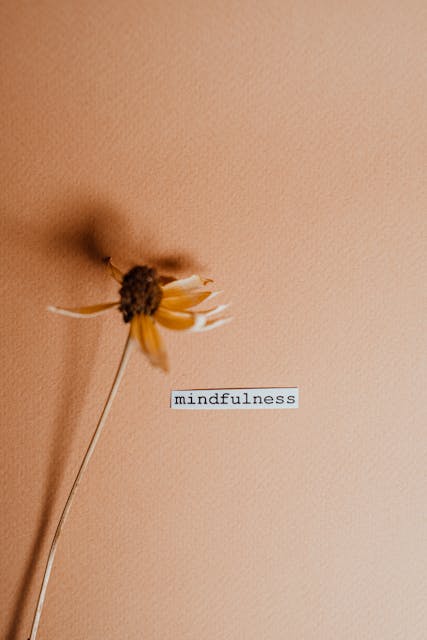Introduction to Mindfulness Techniques
What does it mean to learn mindfulness based therapy? Does it mean you are engaging in mindfulness meditation for anxiety? There has been significant discussion about mindfulness therapy since it has been shown to be highly beneficial from a mental health perspective. It is important to discuss what mindfulness based therapy is, what it is not, and how it might be helpful for you.
Dr. John Kabat-Zinn developed and founded the Center for Mindfulness at the University of Massachusetts Medical School and the Oasis Institute for Mindfulness-Based Professional Education and Training. It was here that he developed his eight-week program called Mindfulness based Stress Reduction in 1979. This program works with individuals to navigate stress differently and to increase flexibility around emotions and body sensations. In 2002 Mindfulness-Based Cognitive Therapy (MBCT) was developed to help individuals who experience repeated episodes of depression and ongoing low mood.
Dr. Zindel Segal and his colleagues published the first book on this, entitled Mindfulness-Based Cognitive Therapy: A new approach to preventing relapse. This approach combined evidence-based cognitive therapy with meditation strategies and mindfulness-based attitudes. During mindfulness based cognitive therapy, Individuals are encouraged to learn about the ways in which our minds approach things when in a state of depression while learning to have a new relationship with these thoughts and behaviours.
Since the development of mindfulness based cognitive therapy (MBCT), it has been used for a wider variety of presenting issues. Mindfulness based cognitive therapy has been used in treatment for generalized anxiety disorder, as an augmentation for OCD treatment for adults and
Mindfulness exercises for anxiety are not necessarily about achieving a state of relaxation. Instead, it is about learning to be in the present moment with what is. A well recognized definition of mindfulness is as follows:
Jon Kabat-Zinn
The present moment might be one that is joyful, sad or frustrating. We are not trying to judge it when we are being mindful. Instead, we are learning to be in the moment without any judgement or labelling. There are many benefits to engaging in mindfulness practice, such as mindfulness for anxiety. By being in the present moment, we are not ruminating about the past or worrying about the future. This can be very helpful for being grounded and making decisions that we might otherwise make impulsively or from extreme emotions. Instead, we can learn to take a mindful moment and bring this to daily interactions and activities.

Therapists will often bring different mindfulness techniques for anxiety into different therapies. For example, these tools can be used during anxiety and depression treatment as well as OCD treatment for teens. Research has shown that mindfulness techniques are effective for a variety of mental health issues.
It is also important to think about formal mindfulness practices, as well as informal mindfulness practices. When we engage in formal mindfulness, we are purposefully setting out to engage in a meditation practice – be it guided or self-directed. We might set aside time for the practice and allow ourselves to be very focused on our body or our breath. Informal mindfulness practice allows us to bring the practice of mindfulness to everyday life activities.
We are now going to review 5 ways that we can bring mindfulness into our lives!
1. Workplace Mindfulness Practices
The workplace often feels so busy. From the moment we step into our workspace to the moment we leave, it is often go go go! How can we bring mindfulness techniques for anxiety into that type of space? This can be a great opportunity to bring in small moments of formal or informal mindfulness practice.
You might try sitting at your desk in between work tasks and taking a few mindful breaths, focusing on your breath passing in and out of your nostrils. You could also try doing a “mundane” task with complete present moment awareness. This might feel very unusual at first but can allow you to infuse small moments of mindfulness throughout your day. By being in the moment with mindfulness exercises for anxiety, you may allow yourself to slow down the hectic pace and become more aware of the here and now.
During online therapy for anxiety or depression, your online therapist might discuss ways that you can incorporate simple mindfulness practice into your daily life. Given how much time we spend at work and how stressful it can be, this can be a perfect place to incorporate small moments of mindfulness!
2. Mindfulness Strategies for Anxiety and OCD
Mindfulness for anxiety is commonly used when we are engaging in treatment for OCD and anxiety.
Treatment for anxiety disorders can involve many different strategies. These often include:
- Learning about connections between thoughts, behaviours and emotions
- Reframing unhelpful thoughts anxiety
- Creating fear ladders to work on encountering items and activities that cause us distress
- Understanding exposure and response prevention therapy
- Allowing anxious thoughts to enter and exit our minds without getting hooked into them
This latter skill is learned by engaging in mindfulness based therapy and learning ideas related to present moment awareness. In order to allow anxious thoughts to come and go, one must try to ground themselves in the present moment and encourage themselves to not get hooked into worries or unhelpful thoughts. These are skills that one will learn during the course of mindfulness exercises for anxiety.
People can engage in small behaviours to help themselves to help them achieve this present moment awareness, such as:
- Plant one’s feet firmly into the ground, allowing your body to become grounded in the present moment
- Allow yourself to notice your in-breath and out-breath without changing the rhythm or pattern of your breathing; observe how this allows you to be in the present moment
- Notice small things around you – leaves on a tree when outdoors, the scent of soap when taking a shower or the taste of a favourite food eaten in very small, deliberate bites
- Use your senses when doing “mundane” activities, such as laundry or washing dishes
By noticing your 5 senses and grounding in the present moment, you will allow yourself to strengthen your present moment awareness muscle.

3. Mindfulness and Physical Health
You might wonder what mindfulness has to do with physical health. A great example of this would be incorporating mindfulness exercises for anxiety when we are getting ready for a quiet restful sleep.
The practice of mindfulness can be incorporated into aspects of our physical health, such as sleep and exercise. The best treatments for anxiety and depression will often focus on sleep and ensure that you are getting a good night’s rest. We know that decreased sleep can often impact one’s mood and ability to manage their anxiety.
People often benefit from having a helpful wind down routine at the end of the day. This might involve taking a relaxing bath or shower, reading a good book or doing some type of relaxation exercise. Mindfulness practice can also be incorporated into a healthy night time routine. Although the goal of mindfulness is not necessarily to relax, it can allow an individual to focus on the present without worrying about the future or ruminating about the past. It just allows one to be present, without judgement. There are many different options for mindfulness practice that one can engage in.
Anxiety Canada has an excellent app called MindShift. Within this app, you will find resources for mindfulness. This can be found within the Chill Zone and allows an individual to access helpful guided audio recordings for mindfulness. By incorporating mindfulness strategies into your daily sleep routine you might start to notice changes in sleep patterns and overall feelings of restfulness.
4. Mindful Eating Habits

Mindfulness strategies have been found to be very helpful when it comes to healthy eating habits. The Canadian Food Guide has written about some very helpful prompts that you can ask yourself when eating a meal or preparing your food. We encourage you to check this out if you might be interested in bringing mindful eating into your daily life!
The idea behind mindful eating, like other types of mindfulness, is that we use our 5 senses to fully notice what is happening in the present moment. When it comes to food, this would involve approaching our food in a more purposeful manner.
Many of us will eat our meals when we are on the go or engaged in other activities, such as when we are at our desks or scrolling through social media. By paying attention, on purpose, to the food we are eating, we will often eat less and enjoy our food more. This might involve eating your meal in much smaller bites, putting down your fork and knife in between bites, smelling your food intentionally and savouring each mouthful.
These types of strategies can be a wonderful way to learn the skills of mindfulness. It is different from engaging in formal practice and will allow you to bring the skill of mindfulness into your daily life. This can be an excellent way to learn mindfulness in the context of mindfulness for anxiety as well.
5. Mindful Parenting Techniques
Another amazing way to bring mindfulness into your life is within your toolbox of parenting skills!
It is understandable for parents to get triggered by their children. Our kids often know the best way to press those buttons! And parents also have emotional baggage from their past. While all these factors are understandable, we do not want to let this get in the way of us being the parents that we want to be.
When we bring mindfulness into the realm of parenting, we ensure that our emotions do not get the better of us and we remain firmly planted in the present moment. Remember that parental stress and heightened reactivity can be very contagious! So while we might feel that raising our voices will bring an end to problematic behaviour, it might actually heighten it or reinforce it!

What are some ways that parents can remain mindful, of the storm of emotions they might experience? Here are some strategies you can try:
- Name your emotion and allow it to be there without judgement. Then take a mindful moment or breath. You might say to yourself, “I am feeling so angry because my house is a mess”. And then take a few deep breaths and allow yourself to just feel without escalating
- Upon waking and before going to bed take a few deep breaths and think of 1-2 things you were grateful for that day. This practice can heighten compassion for yourself and for your children. No day is perfect, but we can find the good when we look for it.
- Try tensing and releasing your fists before you allow your emotions to take over. When we tense and release major muscle groups we allow our body to regulate itself. You might also want to have a happy memory of your child that you think about while doing this.
- Have a small reminder of something you love about your child on your person. This could be a small swatch of a baby blanket in your pocket or a favourite small toy they used to carry around. You can rub this when your emotions run high and bring your senses into the moment. This can allow you to become grounded in the present moment and remember the type of parent that you want to be.
Mindful parenting can also incorporate being kind to yourself and showing yourself self-compassion for always trying to be a great parent. All parents get carried away with emotions at times. But that does not mean you should be angry at yourself or feel you are not doing a “good enough” job. Being mindful of your struggles and letting go of anger and shame can also help you to parent in the way you want during the next encounter!
Where Can I Learn Mindfulness Therapy?
Does FTPS offer mindfulness therapy near me? We do! We offer interventions using both formal and informal mindfulness practices for youth, teens and adults. Our clinicians have completed training in mindfulness skills and mindfulness techniques for anxiety. We always continue to engage in professional development in order to provide you with the best treatment possible. We deliver online therapy across Canada, throughout Ontario, Nova Scotia, British Columbia and New Brunswick. We look forward to hearing from you so we can tell you about our treatment approaches and services. Contact us today!
References
https://www.hsph.harvard.edu/nutritionsource/mindful-eating/
https://food-guide.canada.ca/en/healthy-eating-recommendations/be-mindful-of-your-eating-habits
https://childmind.org/article/mindful-parenting-2
DISCLAIMER: This content is meant for informational and educational purposes only. Only a licensed psychologist or psychiatrist can diagnose a mental health disorder. The content of this website is not meant to be a substitute for therapy. Visiting this website should not be considered to be equivalent to a relationship with FTPS. Mental health concerns should only be discussed in the context of providing professional services after the consent process has been completed with a qualified FTPS associate outside of our website.






